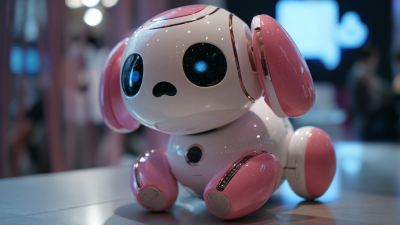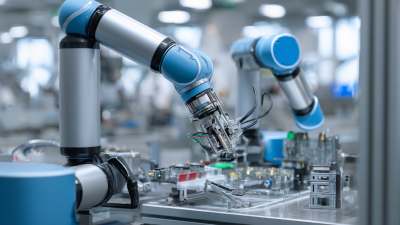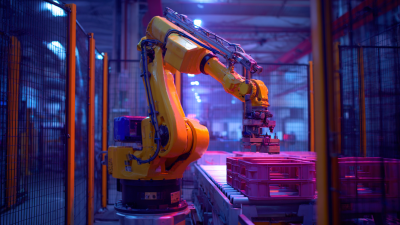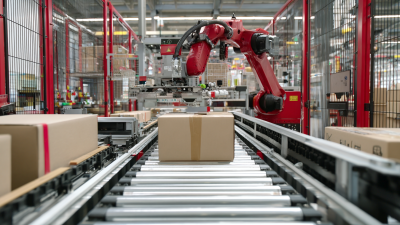Exploring the Future of Online Robots in Everyday Life and Digital Interactions
As we stand on the brink of a digital revolution, the integration of online robots into our everyday lives is becoming increasingly apparent. These sophisticated machines are not merely tools but are evolving to become integral components of our daily digital interactions. The potential of online robots extends beyond simple tasks; they are designed to enhance user experiences, personalize content delivery, and foster more engaging and intuitive connections within the digital realm.

In this exploration of the future, we will delve into the various ways these online robots can transform our engagement with technology, from virtual assistants that streamline our routines to interactive platforms that redefine the way we communicate and collaborate. As we discover the vast possibilities that lie ahead, understanding the implications and applications of online robots will be crucial in navigating this exciting frontier of digital innovation.
Understanding the Role of Online Robots in Daily Activities
The integration of online robots into daily life is transforming how we engage with technology and each other. As these robots become more sophisticated, they are increasingly embedded in our everyday activities, providing assistance in tasks ranging from household chores to complex problem-solving. For instance, virtual assistants can help manage schedules, order groceries, or control smart home devices, allowing individuals to streamline their daily routines and enhance productivity.
Moreover, online robots are redefining digital interactions by offering personalized experiences that cater to individual preferences. Through machine learning and artificial intelligence, these robots can learn from user behavior and adapt their responses, making interactions more intuitive and engaging. This shift not only improves efficiency but also fosters a sense of connection, as users feel understood and supported by responsive digital companions. As we continue to explore the capabilities of online robots, their role in shaping both our daily activities and our overall digital experiences will likely expand, creating a future where technology seamlessly integrates into our lives.

How to Enhance Personal Productivity Using Virtual Assistants
In today's fast-paced digital world, virtual assistants are becoming essential tools for enhancing personal productivity. These intelligent online robots can manage tasks, schedule appointments, and streamline communication, allowing individuals to focus on more critical aspects of their lives. By automating routine tasks such as email sorting or reminders for upcoming deadlines, users can allocate their time more efficiently, minimizing distractions and maximizing output.
Furthermore, virtual assistants can adapt to users' unique needs through advanced machine learning algorithms. This adaptability enables them to provide personalized recommendations, such as suggesting optimal times for work breaks or organizing tasks based on priority levels. As they become increasingly integrated into our daily routines, these AI-driven tools not only help maintain organization but also foster a more conducive environment for creativity and decision-making. Embracing these technological advancements can lead to significant improvements in our personal and professional lives, paving the way for a more productive future.
Impact of Virtual Assistants on Personal Productivity
This bar chart illustrates the impact of virtual assistants on personal productivity. It highlights time saved per week, tasks automated, improvement in user focus, and overall user satisfaction based on surveys and studies in the domain of digital interactions and productivity enhancements.
Navigating Social Interactions with AI-Powered Chatbots
The rise of AI-powered chatbots has revolutionized the landscape of digital interactions, reshaping how we communicate in our daily lives. These intelligent systems are no longer limited to basic customer service roles. Instead, they have evolved to understand context, sentiment, and even humor, enabling them to engage in nuanced conversations. This shift not only enhances user experience but also fosters a sense of companionship, as individuals interact with these avatars in various settings, from social media platforms to online forums and virtual marketplaces.
As these chatbots gain more sophisticated algorithms, their ability to navigate social interactions becomes increasingly refined. They can mimic human conversational patterns, leading to more organic exchanges and reducing the barriers often present in human-robot communication. This capability opens up new avenues for users to express themselves freely, seek advice, or simply enjoy light-hearted banter. However, with this evolution comes the challenge of ensuring ethical considerations, such as user privacy and emotional manipulation. Balancing innovation with responsibility will be crucial as we embrace these AI entities in our everyday conversations.
Exploring the Future of Online Robots in Everyday Life and Digital Interactions - Navigating Social Interactions with AI-Powered Chatbots
| Dimension | Description | Current Usage (%) | Projected Growth (%) |
|---|---|---|---|
| Chatbots in Customer Support | AI-powered chatbots assist customers with inquiries and issues. | 60 | 80 |
| Personalized Recommendations | Chatbots provide tailored suggestions based on user preferences. | 50 | 75 |
| Mental Health Support | AI chatbots offer emotional support and coping strategies. | 30 | 65 |
| Virtual Shopping Assistants | Assist users in finding products and making purchases online. | 40 | 70 |
| Language Translation Services | Chatbots facilitate real-time translations for users. | 20 | 60 |
Integrating Online Robots into Smart Home Ecosystems
The integration of online robots into smart home ecosystems promises to revolutionize the way we interact with our living spaces. As smart homes become increasingly sophisticated, online robots can serve as both assistants and companions, enhancing functionality and convenience. These robots can seamlessly connect to various smart devices, coordinating tasks like adjusting lighting, managing security systems, and controlling temperature settings through simple voice commands or automated schedules. This interconnectedness allows for a more intuitive home environment that responds to the needs of residents in real time.
Moreover, the potential for social interaction with online robots opens up new dimensions in everyday life. As these machines become more adept at understanding human emotions and preferences, they can provide companionship, assist with daily chores, and even facilitate communication among family members, especially in multi-generational households. The integration of AI capabilities allows these robots to learn from their interactions, creating a personalized experience. With continuous advancements in technology, the future holds the promise of homes that are not just smart, but also engaging and supportive through the thoughtful integration of online robots.
Future Trends in Human-Robot Collaboration for Enhanced Service Experience
As we delve into the future of online robots and their role in our daily lives, human-robot collaboration emerges as a key trend enhancing the service experience. According to a recent report by the International Federation of Robotics, the global market for service robots is projected to reach $80 billion by 2026, with significant growth driven by advancements in AI and machine learning. This collaboration is not only improving efficiency but also allowing robots to take on more nuanced roles, offering personalized interactions that were previously unattainable.
Tip: Businesses looking to integrate robots into their service models should focus on user-friendly interfaces. Engaging design can ease the transition for customers adapting to robotic companions in service settings.
Moreover, the integration of robots into sectors like healthcare and customer service highlights their potential to augment human roles rather than replace them. A study from McKinsey & Company found that 70% of employees are open to working alongside robots, seeing them as collaborators that can handle repetitive tasks and enable a deeper focus on customer relations. This shift promises a future where enhanced service experiences become the norm, driven by a seamless blend of human intelligence and robotic efficiency.
Tip: Consider regular training sessions for staff to familiarize them with robotic systems, ensuring a smooth workflow and maximizing the benefits of human-robot teamwork.

Related Posts
-

Discover the Future of Companionship: How Robot Pets are Changing Lives
-

How to Enhance Manufacturing Efficiency with Cobot Robots in Your Business
-

Exploring the Future of Palletizing Robots at the 138th China Import and Export Fair 2025
-

Unleashing Digital Transformation: The Ultimate Guide to Robotic Process Automation Software
-

Transforming Logistics: Cobot Palletizers at the 138th Canton Fair 2025 – Industry Insights and Innovations
-

What Are the Advantages of Using Robotic Process Automation Tools
Smart Robotics brand movie
Watch video


